Primal Quest Gear, Part III: Water Sports
Down-river transit during the Primal Quest adventure race will be accomplished in two ways: In a traditional tandem kayak as well as on a not-so-traditional riverboard. As such, the race requires an odd mix of aquatic gear, including knee and shin guards, fins, booties, a climbing helmet and, of course, the riverboard itself.
Riverboarding is a new whitewater phenomenon that sends participates straight through the rapids on their bellies. During Primal Quest my four-person squad -- Team Bulleit -- will use heavy-duty riverboards from Carlson and Rocky Mountain Riverboards. My particular board, the StreamJet ($435; www.rockymountainriverboards.com) is made of dense and buoyant polyethylene foam with handles and a curved design for maneuverability.
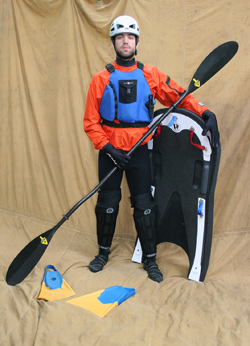
Primal Quest Water Gear
A shield of hard plastic on the StreamJet's hull protects the foam board from errant river rocks, while the exposed foam on top -- where the body contacts the board -- is soft and comfortable. Its subtle hourglass shape accommodates swim strokes. For control during the ride it has nylon webbing handles andbrace grooves for your elbows.
To protect my legs, which dangle free off the back of the riverboard, I'll wear SixSixOne's 4x4 Knee/Shin Combo guards ($40; www.sixsixone.com). On my head is Petzl's Meteor III helmet ($90; http://en.petzl.com), which is made primarily for climbing, though it has crossover use. (I will wear this same helmet on the Primal Quest's climbing segment, thus saving overall gear weight.)
My glove of choice is the Pro-Pel Paddle Glove by Henderson (www.hendersonusa.com), which are basic Neoprene gloves but with webbing between the fingers to add power while swimming. On my feet, the classic Churchill Floating Fins have soft rubber in the foot pocket area and harder rubber for power in the wings. They are available for $40 on www.facelevel.com, which was the Web site I used to research and procure gear for riverboarding.
For Primal Quest's kayak leg, which may be 100 miles or more in length, I'll employ the Xception SL Tour Carbon paddle made by Adventure Technology (www.atpaddle.com). This solid carbon paddle weighs less than two pounds and has a unique ergonomic design.
Essentially, the Xception SL's contoured grip puts your wrist in a neutral position as the blade cuts through the most powerful part of the stroke, alleviating strain. The company says the $399 paddle will give you a stroke that "uses the least energy while maintaining control and comfort."
For a splash top, I'll wear the Kokatat Tropos Light Breeze ($69; www.kokatat.com), a waterproof and breathable piece. It has rubbery cuffs and a collar that cinches tight to keep water off your core.
My life vest, or PFD in adventure-race parlance, is a well-loved (and discontinued) old Lotus Designs (www.lotusdesigns.com) model. It's equipped with a Gerber River Runner Knife ($25; www.gerbergear.com).
Montrail (www.montrail.com) and Henderson will outfit my feet respectively with the Ocoee booties (pictured) and the Hyperflex Cyclone Round-Toe Surf Boot (not pictured). The $70 Ocoee booties, which have a hard sole, will be used while kayaking; the soft-soled Hyperflex booties, $30, fit inside the swim fins for the riverboard segment.
Finally, next to my skin, underneath all the other gear, is a comfortable wetsuit from Billabong (www.billabong.com). It is an older model with three-millimeter-thick neoprene. The suit, which was designed for surfing, provides generous range of motion to keep me going for hours on end out there on the race course.


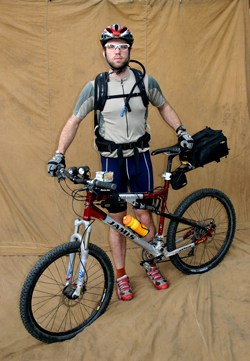
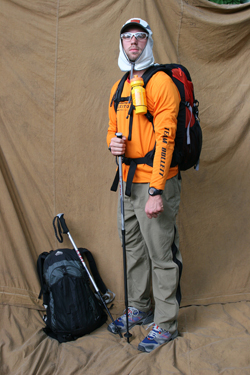
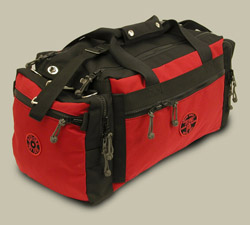
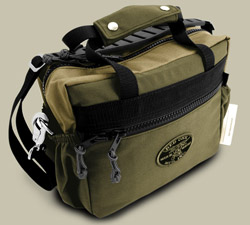
 Subscribe to Stephen's RSS Feed
Subscribe to Stephen's RSS Feed
 Subscribe to Stephen's RSS Feed
Subscribe to Stephen's RSS Feed